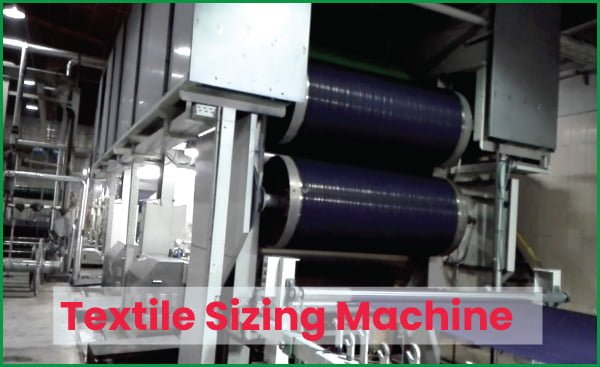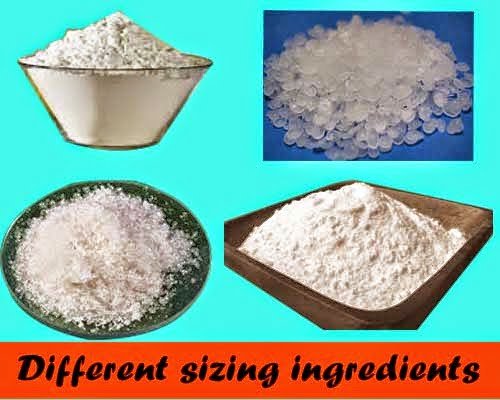What is Textile Sizing | Objects of Textile Sizing
Last updated on August 11th, 2023 at 11:19 pm
Definition of Textile Sizing
Sizing is the intermediate process of weaving preparation. The yarn after being warped is sized or coated with a thin film of adhesive. The purpose of sizing the yarn is to improve its weave-ability. A single unsized yarn is incapable of withstanding the strains of weaving and also affects the loom production and efficiency. Hence it becomes crucial to size the yarn, particularly the single yarn. In fact, it is the most important in the weaving preparatory process. It would not be an exaggeration to say that to size well is to weave well, just as the saying goes that to card well is to spin well. The size materials used in sizing consists of a number of ingredients mixed together in suitable proportions to form a viscous paste. The type of sizing material differs for different types of textile materials.

Objects of Textile Sizing
The objectives are manifold and are as follows –
- Add strength to the yarn so as to withstand the stresses and strains of the weaving process.
- Improve the abrasion resistance of the yarn.
- Makes the yarn smoother.
- Add more weight.
- Cover the protruding fibres on the yarn surface.
Important Technical Considerations of Sizing
The following are the basic considerations to be made –
- Type of the weaving machinery on which the sized yarn is to be used. The extent of tension that the yarn is subjected to depends on the loom type.
- The type of textile material being sized. Different materials (cotton, polyester etc.) respond differently to the strains encountered in weaving. The sizing material used depends on the type of textile material being used.
- The stresses and strains that the yarn is subjected to during the process.
- Energy consumption and cost.
- Characteristics of the ingredients used, methods of size paste preparation and their concentration of the ingredients, viscosity of the size paste etc.
- Desizability of the sized material after weaving and the cost involved.
- The sophistication of the machine.
- Economy of the process to get the best quality of warp at the lowest cost.
Suitability of Size for Different Textile materials
Each type of textile material responds differently to the stresses and strains to which it is subjected in the weaving process. For example cotton material responds differently as compared to polyester material. Continuous filament yarns have good resistance to the weaving tensions due to their better cohesion and continuity of filament length. The purpose of sizing in such cases is only to improve the abrasion resistance rather than strength. The toughness of the textile material is even more important than its strength. Synthetic fibres are advantageous in this aspect. Each type of textile material has its own merits and demerits and the type of size ingredients have to be used accordingly to compensate for their demerits.



